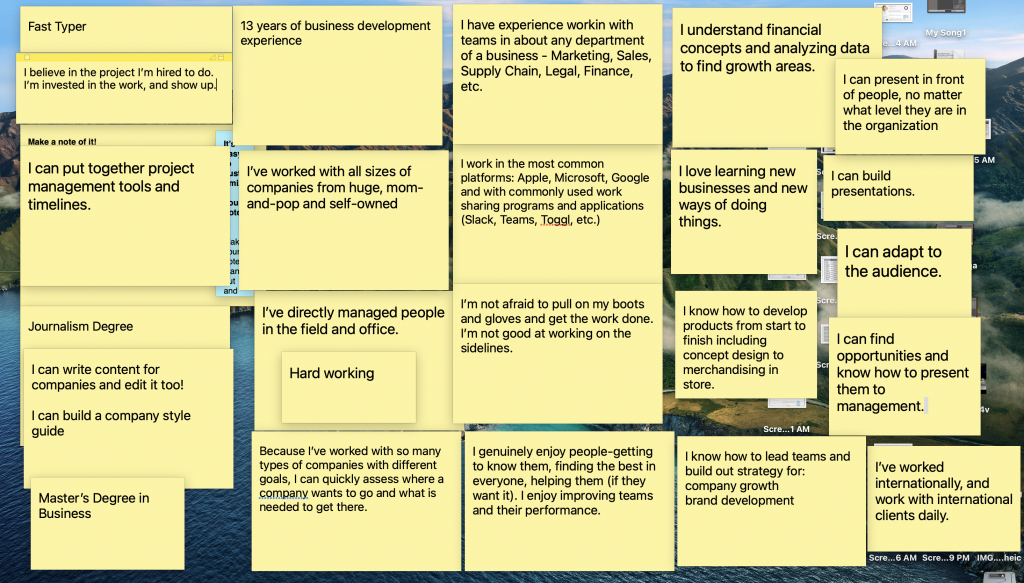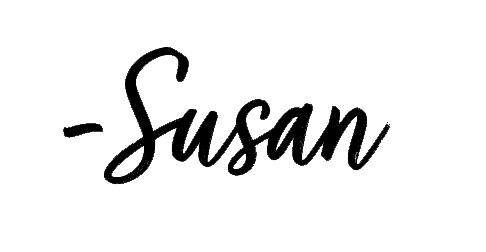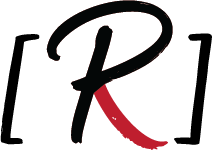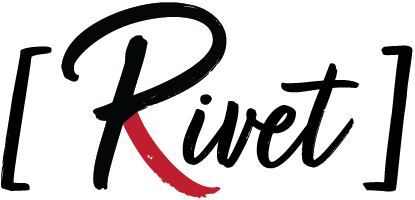
Do not send that resume before you read this!!
So for whatever reason, you’re in the job market again. Whatever you do, don’t panic. Above all else, don’t start networking with friends, follow people on LinkedIn or respond to any job opening until you start thinking like a marketing genius.
I was there once too. I was on a big project for a large company some years back. The project was ending, and I wasn’t quite sure where this would put me. I knew I had to start asking about a new role within the company or looking for an opportunity outside.
At one point, my coworker looked at me and said, “Who is going to hire us? We don’t have any marketable skills.” There was some truth to that. We worked on several different things across the company but were never working on one thing for too long. This made us second guess ourselves and plummet our confidence levels to a crisis point inside our heads.
Luckily, this wide range of experiences gave us the luxury to take the leap and dive into waters we had never swum in before. We both moved across the country and started over in entirely different roles. We are both much happier for it too.
Find Your Worth
One of the keys to landing a new job is recognizing your skills, then making them in a way to make them valuable to a company. This is what great marketers do well. They make sure their message is tailormade for that particular customer they are going after.
How to use marketing to market yourself?

So how do you make your resume, CV, cover letter, phone call, email, etc., marketable to a hiring manager? You can’t do it by spitting out all of your accomplishments, skills, education or elevator pitch as soon as you get the chance. Instead, it’s about thoughtfully homing in on what you perceive would be why someone would hire you for a specific job.
For example, if you are an accountant who wants to shift to a role in Finance, your ability to crunch numbers is a good skill, but it’s not the best fitting skill to present to a hiring manager. Instead, it would be better to market a skill of understanding why the numbers affect different processes or departments.
Taking a cue from Marketing again, this would be called a positioning statement or unique selling point (USP). According to Indeed.com, a positioning statement is, “a short description of how a brand, service or product satisfies a consumer needs better than the competition. Positioning statements are also called statements of differentiation or unique selling points (USPs).”
How to make a positioning statement?
So how do you think of differentiators to craft a positioning statement and grab a prospective employer’s attention?
In his podcast Freelance Cake (The Good Kind of Cheating – How a Positioning Statement Makes the Freelance Game Easier to Win), Austin L. Church offers a great idea. Grab a stack of sticky notes or 3×5 notecards and set a timer for 15 minutes. Write down one valuable skill on each note until you get to at least 30. This can be your education, certification, experience, quality, or whatever you believe is something a hiring manager would think is valuable enough to pay you money for it.
It’s best to write these down physically, so you can better dive into the creative process. Unfortunately, my daughter used my sticky-note stash to make 200 origami birds for an art installation on her bedroom wall. So, I used my sticky-note application on my computer:

After you have at least 30, narrow down the top five to eight qualifications. You will use these to start crafting your story or positioning statement. If you need to make a shorter pitch, such as an “elevator speech,” you can use just two or three.
Start Building
This exercise gives you a tangible piece to start building your CV, resume and cover letter and should boost your confidence when you recognize that there are at least 30 things you can bring to a new job.
The key is picking only the qualifications that matter to the person doing the hiring. For example, I may be fast at typing, but probably most employers I will be looking at will not care or will not pay for me only to type quickly.
Once you have your positioning statement, you can jump into the networking and job search game. Now you can dust off the resume and start obsessing about what words to use.
Again, the key take-home is ensuring you are clear about the value you offer a company, so a hiring manager can plainly see why they would hire and pay you to do a job for them.
Remember, a one-size-fits-all message is not the way to go in today’s marketing world. Instead, you need to change how you position yourself according to who you are talking to (your audience) and what job you seek. This doesn’t mean you make up something you think a prospective employer wants to hear. Instead, it’s about looking at your qualifications, skills, education, experience, etc., and crafting it in a marketable way for the specific position.
Final Thoughts
Now, take a deep breath. I give you permission to take the time to improve your image and craft a new positioning statement. I know that everyone is asking for your time, but this will be valuable for increasing your self-assurance and tackling the job market with confidence.
If you are looking for more information on how to write a positioning statement, tell a story about yourself, or have other ideas on how to make one, let me know. I love learning new things and helping people improve. Besides, it takes networking to conquer the job market successfully.

Sources
- https://www.davidmeermanscott.com/books/the-new-rules-of-marketing-and-pr
- https://freelancecake.com/podcast/how-a-positioning-statement-makes-the-freelance-game-easier-to-win
- https://www.indeed.com/career-advice/career-development/positioning-statement#:~:text=A%20positioning%20statement%20is%20a,unique%20selling%20points%20(USPs).
- Meerman-Scott, D. “The New Rules of Marketing and PR.” (2022) Available at: ,https://www.davidmeermanscott.com/books/the-new-rules-of-marketing-and-pr
- https://unsplash.com/@homajob
- https://unsplash.com/@firmbee







